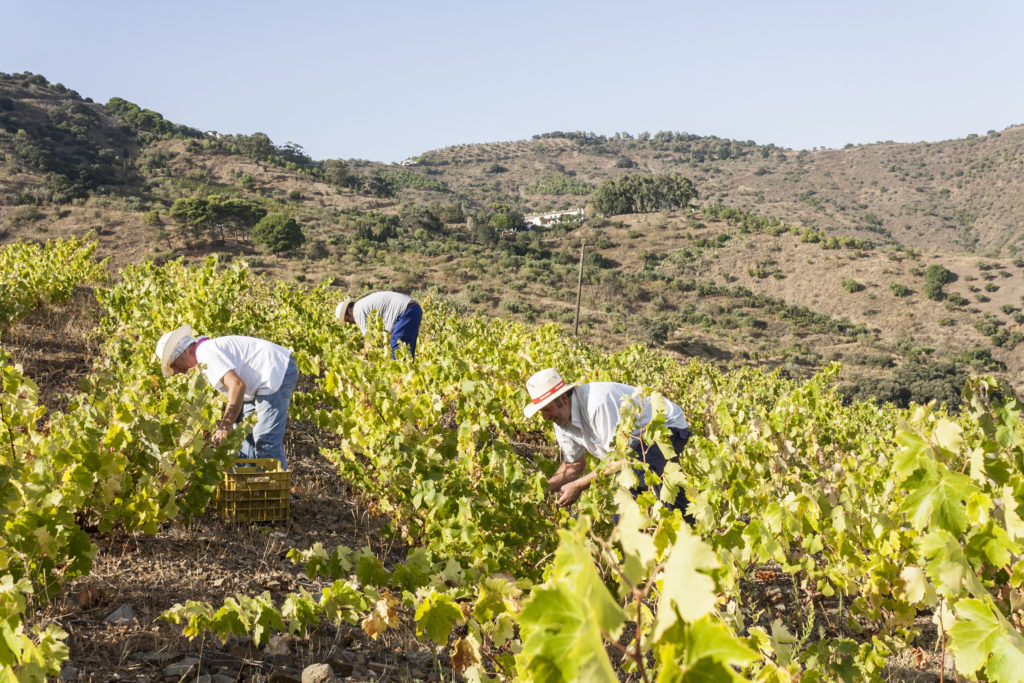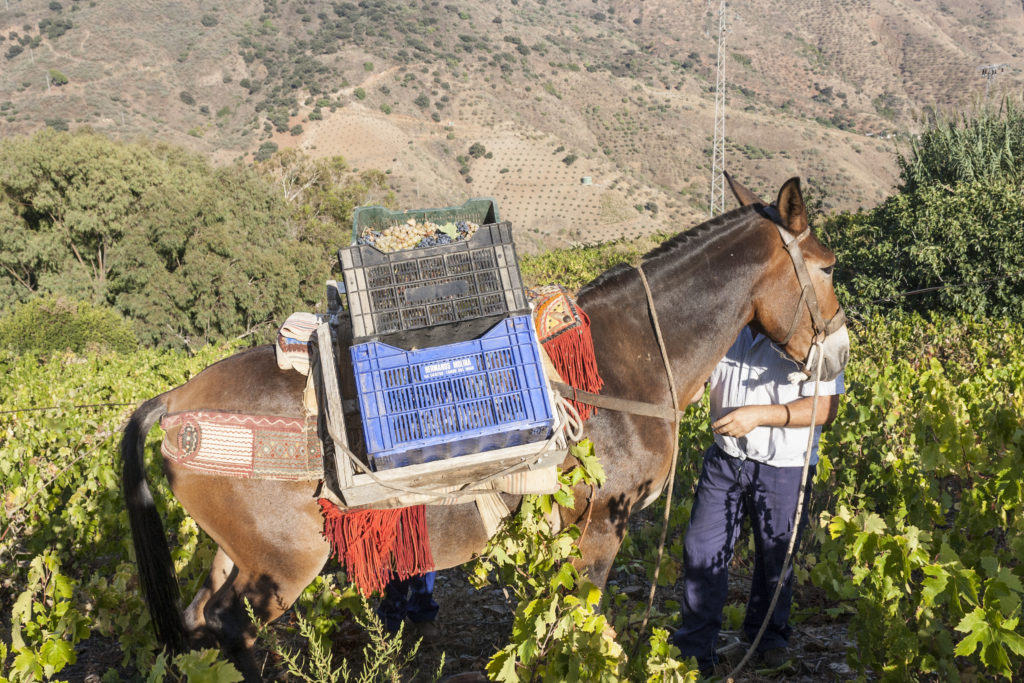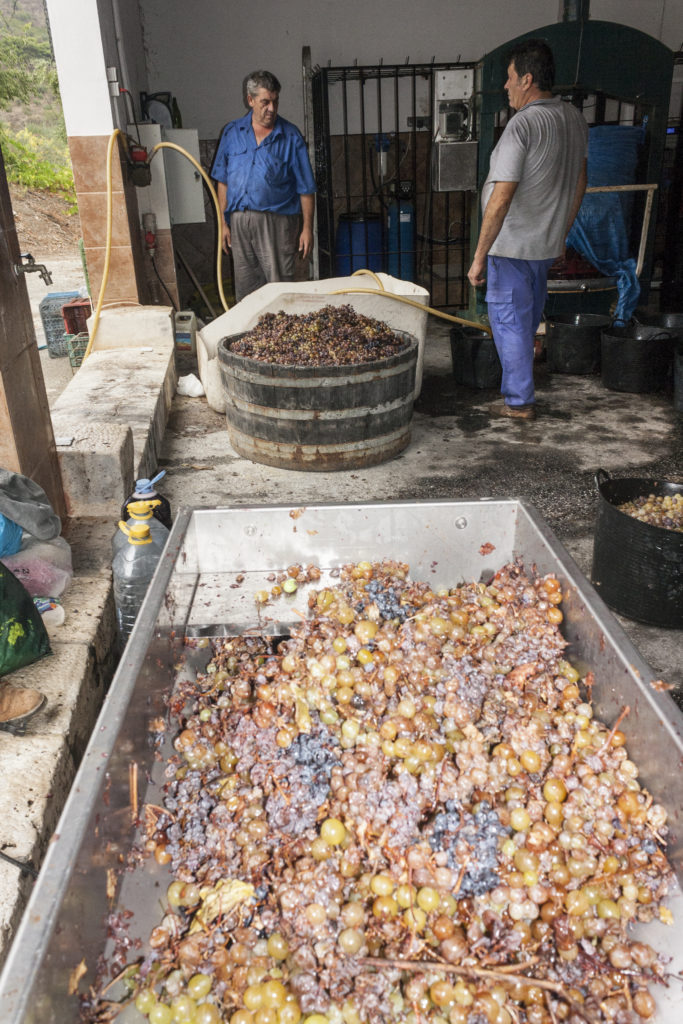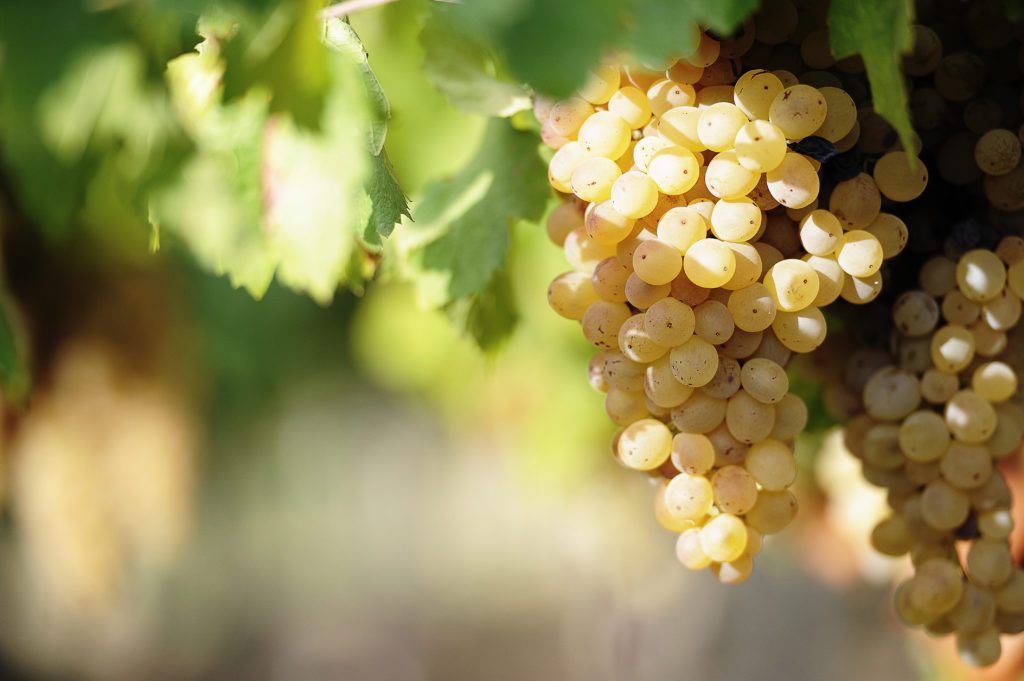Grape harvest and vine growing in Málaga
Viticulture or vine growing in the metropolitan area of Malaga receives particular importance, especially the harvesting process, as its own characteristics make it different from the rest of Andalusia.
Historical notes
Some historians claim that Malaga was one of the first cities in Europe to cultivate vines. Some argue that it was the Phoenicians who first brought the vine to the colonies they founded. On the other hand, Guillén Robles in his History of Málaga states that it was the Greeks who, once established in Málaga, introduced the techniques of working in the vineyards around 600 B.C. There are also references to the value given to Málaga wine by Romans. Much later, during the Muslim period, wine was already an important industry, and it was the Catholic Monarchs who created the Brotherhood of Winemakers (which has remained throughout the centuries up to the present day), whose function was to ensure the purity of winemaking procedures.
In this way, the value and prestige of Malaga wine grew until it reached its maximum splendour during the 17th, 18th and part of the 19th centuries. However, by the end of the 19th century, its commercialisation began to be endangered by imitations and fraud. These factors were aggravated by the appearance, from North America, of two fungi, oidium and mildew, that affected vine cultivation, as well as the phylloxera plague, which definitively destroyed the Malaga vineyards. Nevertheless, Malaga wine was able to survive thanks to the grafting of the two most important grape varieties in the area: Moscatel and Pedro Ximénez, which are nowadays hallmarks of the province. In the Montes de Málaga, the mountain range that surrounds the city, vineyards are grown at high altitudes and on very steep slopes, which does not prevent them from benefiting from the Mediterranean climate, due to their proximity to the coast. The combination of elements such as climate, rainfall and the slate soils that predominate in the area favours the production of high quality wines. The grape harvest is still carried out by hand, and the use of animals is essential to help in the harvesting of the grapes, as the steep slope of the terrain makes it impossible for machinery to enter the vineyards. The arriero or mulero (muleteer) is in charge of taking the mule to the place where the grape harvesters leave the baskets full of grapes to load them into the saddlebags carried by the animal.
Rest of Andalusia
The topography, geology and climate of the Andalusian countryside are excellent for vine growing. The Mediterranean climate and the different microclimates, the mild average temperatures (16ºC), the scarcity of frost and hail, the numerous hours of sunshine per year, a strong altitudinal contrast and the ageing system, create wines of excellent quality, very varied and characteristic.
This trend towards prestigious production has been perpetuated to the present day. More than 70% of Andalusian vineyards are covered by one of the six Designations of Origin established and protected by their respective Regulatory Councils: Condado de Huelva (1933), Jerez-Xérès-Sherry (1933), Manzanilla de Sanlúcar (1964), Málaga (1933), Sierras de Málaga (2001) and Montilla-Moriles (1985).
In addition to these designations, there are 13 protected geographical indications (Vinos de la Tierra or local wines) and other historic wines that are not protected, but quite popular. A whole wine culture has grown up around all these wines, which includes wineries, specialised museums, traditional festivals…
Period / Occurrence:
Seasonal. The grape harvesting period generally begins at the end of August or the beginning of September and finishes at the beginning of October. However, it depends to a large extent on the weather during the last months, as this is decisive for the proper ripening of the grapes.

Vendimia. Photo: Eva Cote Montes. © Instituto Andaluz del Patrimonio Histórico
IAPH image under the conditions established under license cc-by 3.0 de Creative Common. https://creativecommons.org/licenses/by/3.0/es/

Vendimia. Photo: Eva Cote Montes. © Instituto Andaluz del Patrimonio Histórico
IAPH image under the conditions established under license cc-by 3.0 de Creative Common. https://creativecommons.org/licenses/by/3.0/es/

Molturado. Photo: Eva Cote Montes. © Instituto Andaluz del Patrimonio Histórico
IAPH image under the conditions established under license cc-by 3.0 de Creative Common. https://creativecommons.org/licenses/by/3.0/es/

Viñedos ecológicos. Andalucía Turismo y Deporte. www.andalucia.org
Canal Sur Turismo. (2021). La Vendimia Axárquica, Moclinejo, Málaga. [Video File].

